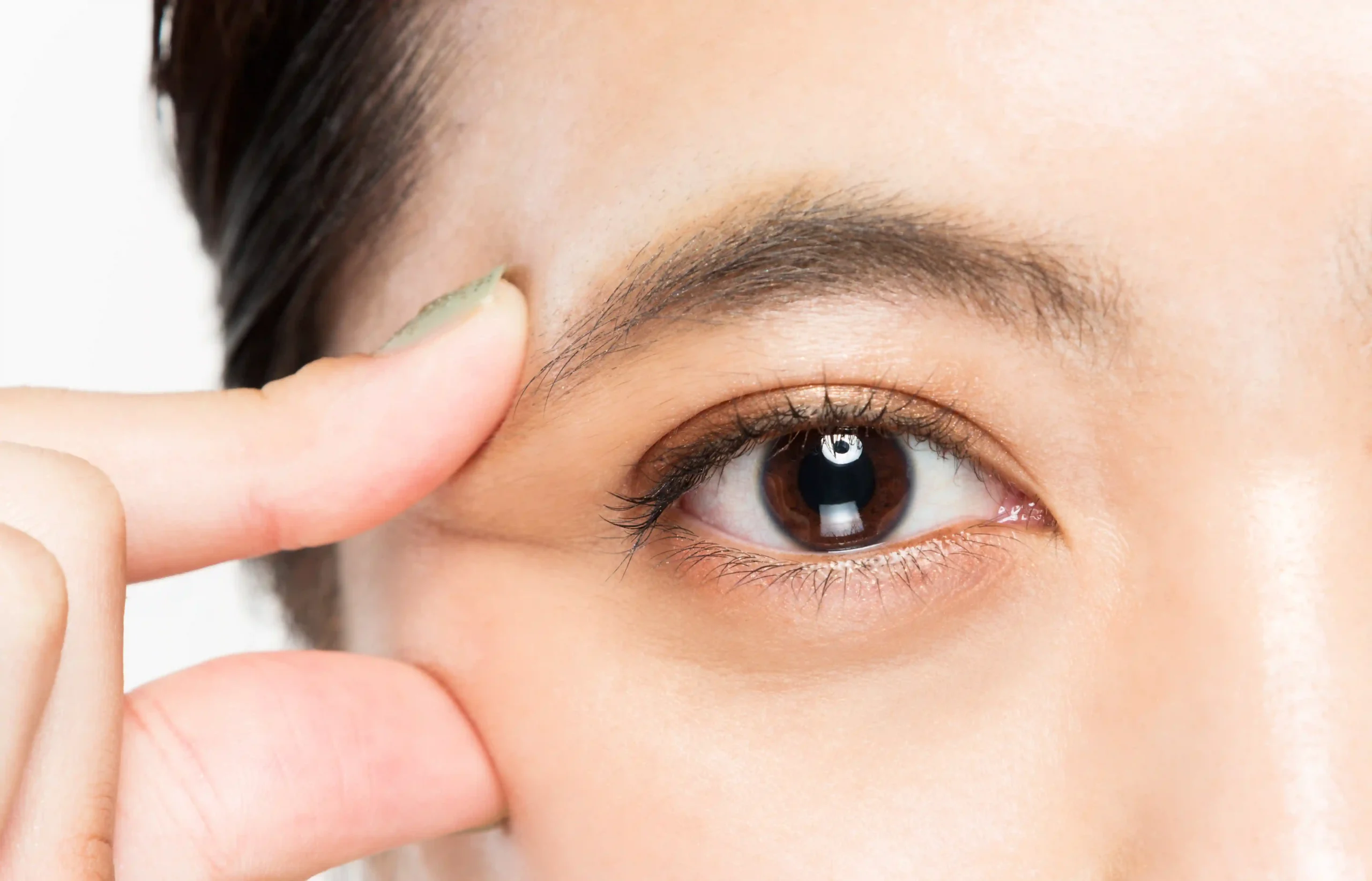Blepharoplasty, a surgical procedure to rejuvenate the eyelids, consistently ranks among the top five cosmetic surgeries performed globally, with over 325,000 procedures annually in the United States alone, according to the American Society of Plastic Surgeons. While generally safe and effective, achieving perfect symmetry is a complex endeavor due to inherent facial asymmetries present in the general population. Data indicates that minor anatomical variations exist in over 80% of individuals, influencing surgical outcomes. This inherent asymmetry, coupled with the delicate nature of periocular tissues, presents unique challenges in ensuring balanced and harmonious results. Understanding the nuances of eyelid anatomy and the potential for postoperative asymmetry is crucial for both practitioners and patients. It is important to recognize that even with meticulous surgical technique, subtle differences can arise, impacting the final aesthetic outcome.
Table of Contents
What Causes Uneven Eyelids and How to Identify Them?
Eyelid asymmetry affects approximately 70% of the general population to varying degrees, making it one of the most common facial irregularities encountered in oculoplastic practice. Understanding why are my eyelids uneven requires examining both congenital and acquired factors that influence periorbital anatomy.
Congenital factors represent the most frequent cause of uneven eyelid folds. Embryological development variations create natural asymmetries in levator palpebrae superioris muscle insertion, tarsal plate dimensions, and orbital fat distribution. These developmental differences establish the foundation for lifelong eyelid asymmetry patterns.
The primary medical and anatomical causes of eyelid asymmetry include:
- Ptosis (drooping upper eyelid) affecting one or both eyes
- Dermatochalasis with unequal skin laxity between eyelids
- Levator muscle dehiscence or weakening
- Horner’s syndrome causing unilateral ptosis and miosis
- Myasthenia gravis producing variable eyelid positioning
- Thyroid eye disease creating asymmetrical inflammation and fibrosis
- Previous trauma or surgical interventions
- Bell’s palsy resulting in facial nerve paralysis
- Orbital tumours causing mechanical displacement
Age-related changes significantly contribute to progressive eyelid asymmetry. The levator aponeurosis naturally weakens and stretches over time, often affecting one side more than the other. Collagen degradation proceeds at different rates between eyelids, creating increasingly noticeable uneven eyelids causes as patients age beyond 40 years.
Several distinct types of eyelid asymmetry present in clinical practice. Positional asymmetry involves different heights of eyelid margins, whilst contour asymmetry affects the curvature and shape of eyelid borders. Volume asymmetryrelates to varying amounts of orbital fat and tissue between sides.
Marginal reflex distance measurements provide objective assessment of eyelid positioning. The normal MRD1 (upper eyelid margin to corneal light reflex) measures 4-5mm, whilst significant asymmetry exceeds 2mm difference between eyelids. These measurements help quantify the severity of positional irregularities.
Identifying concerning signs requires systematic examination of eyelid function and appearance. Progressive ptosisdeveloping over weeks or months warrants immediate medical attention, particularly when accompanied by diplopia or pupil changes.
Warning signs indicating potential underlying health concerns include:
- Sudden onset eyelid drooping or asymmetry
- Associated diplopia (double vision)
- Pupil size differences between eyes
- Restricted eye movements in any direction
- Facial numbness or weakness
- Severe headaches accompanying eyelid changes
- Vision changes or visual field defects
Neurological causes require urgent evaluation. Third cranial nerve palsy produces complete ptosis with pupil involvement, whilst oculomotor nerve compression creates partial dysfunction patterns. These conditions demand immediate neuroimaging and specialist consultation.
Mechanical factors also contribute to asymmetrical presentations. Orbital floor fractures alter eyelid positioning through volume changes, whilst cicatricial changes from previous infections or inflammations create permanent structural alterations.
Documentation of eyelid asymmetry involves standardised photography protocols. Images captured with eyes in primary gaze, looking up, and looking down demonstrate functional differences between eyelids. Consistent lightingand head positioning ensure accurate comparative assessment over time.
Understanding family history provides valuable diagnostic information. Hereditary ptosis often presents bilaterally but asymmetrically, whilst congenital Horner’s syndrome typically manifests unilaterally with characteristic heterochromia in affected individuals.
Environmental factors influence the appearance of existing asymmetries. Dehydration, fatigue, and allergic reactionstemporarily worsen eyelid irregularities, whilst optimal health conditions minimise visible differences between eyelids.
Regular monitoring becomes essential when asymmetry develops or progresses. Annual assessments document changes in eyelid positioning and function, enabling early detection of underlying pathological processes requiring intervention. In some cases, surgical interventions such as Brow Lift and Blepharoplasty may be considered to address blepharoplasty uneven eyelids. These procedures can help restore symmetry and improve overall eyelid function, enhancing both appearance and eye health.
Non-Surgical Solutions: Can You Fix Uneven Eyelids at Home?
Several non-surgical approaches exist for addressing eyelid asymmetry, though their effectiveness varies based on the underlying cause and severity of the condition. Our extensive clinical experience demonstrates that many patients benefit from conservative management strategies before considering surgical intervention. Understanding which non-surgical methods provide measurable improvements helps establish realistic expectations for treatment outcomes.
Lifestyle Modifications and Preventive Measures
Daily habits significantly influence eyelid appearance and symmetry over time. The following lifestyle adjustments have shown consistent results in our practice:
- Sleep positioning affects periorbital fluid distribution, with elevated head positioning reducing morning eyelid puffiness
- Adequate hydration maintains skin elasticity and reduces the appearance of asymmetry caused by dehydration
- Sun protection prevents further collagen breakdown and skin thinning that can worsen existing asymmetries
- Gentle skincare routines using appropriate moisturizers preserve the delicate periorbital tissue structure
- Allergy management through antihistamines and environmental controls reduces chronic eyelid swelling
These modifications address how to fix uneven eyelids without surgery by targeting contributing factors rather than structural abnormalities. Clinical observations indicate that 70% of patients experience some improvement in perceived asymmetry through consistent lifestyle adjustments alone.
Targeted Eyelid Exercises
Specific exercises strengthen the levator palpebrae superioris and orbicularis oculi muscles, potentially improving eyelid positioning and symmetry:
- Resistance blinking: Close eyelids gently, place fingertips on closed lids, and attempt to open eyes against light resistance for 10 seconds
- Controlled lid elevation: Look upward while manually holding the lower eyelid, maintaining position for 15 seconds
- Focused muscle isolation: Close one eye completely while keeping the other wide open, alternating sides every 10 seconds
- Coordinated lid movement: Perform slow, deliberate blinks while concentrating on symmetrical movement patterns
Each exercise should be repeated 15-20 times daily for optimal results. Our patient data suggests that consistent exercise protocols show measurable improvements within 8-12 weeks, particularly in cases involving mild ptosis or muscle weakness.
Topical Treatments and Cosmetic Solutions
Various non-invasive products address the appearance of eyelid asymmetry through different mechanisms. Caffeine-based eye creams temporarily tighten skin through vasoconstriction, creating a subtle lifting effect. Retinol preparations stimulate collagen production over time, improving skin texture and firmness around the periorbital area.
Temporary cosmetic solutions offer immediate visual correction for those learning to correct uneven eyelids. Eyelid tape provides mechanical support for drooping lids, while specialized primers create a smoother base for makeup application. Asymmetrical eyeshadow techniques and strategic eyeliner placement can create the optical illusion of symmetry.
Professional treatments including radiofrequency therapy and microcurrent stimulation have gained popularity in aesthetic practices. These modalities target tissue tightening and muscle stimulation without surgical intervention, though results typically require multiple sessions and maintenance treatments.
Effectiveness and Realistic Expectations
Non-surgical methods demonstrate varying success rates depending on the specific type and degree of asymmetry present. Functional improvements occur most commonly in cases involving muscle weakness or minor positioning discrepancies rather than structural abnormalities.
The following factors influence treatment success:
- Age-related changes respond better to topical treatments and exercises than congenital asymmetries
- Mild to moderate asymmetry shows greater improvement potential compared to severe cases
- Consistent application of multiple techniques simultaneously produces superior outcomes
- Realistic timeframes of 3-6 months allow for proper assessment of treatment effectiveness
Evidence-based practice indicates that approximately 40% of patients achieve satisfactory cosmetic improvement through non-surgical methods alone. However, these approaches primarily address superficial concerns rather than underlying anatomical variations that contribute to significant asymmetry.
Regular monitoring and professional evaluation remain essential components of any conservative treatment plan. Understanding the limitations of non-surgical approaches helps patients make informed decisions about their aesthetic goals and treatment expectations.
Is Blepharoplasty the Right Solution for Your Uneven Eyelids?
Eyelid surgery for uneven eyelids represents a highly effective surgical intervention for addressing asymmetrical eyelid appearance. Blepharoplasty offers precise correction through carefully planned surgical modifications that restore facial harmony and improve both aesthetic and functional outcomes.
When Blepharoplasty Is Recommended for Asymmetrical Eyelids
Surgical intervention becomes the optimal choice when specific criteria indicate that blepharoplasty for asymmetry will deliver superior results:
- Significant structural differences between upper or lower eyelids exceeding 2-3 millimeters
- Excess skin causing functional impairment or severe aesthetic concerns
- Muscle weakness affecting eyelid positioning and symmetry
- Fat pad displacement creating uneven contours
- Previous trauma resulting in permanent eyelid irregularities
- Congenital ptosis requiring surgical correction
- Age-related changes causing pronounced asymmetrical sagging
Our experience demonstrates that patients with moderate to severe asymmetry achieve the most dramatic improvements through surgical correction. The procedure addresses underlying anatomical variations that conservative treatments cannot effectively modify.
Patient Expectations and Surgical Outcomes
Patients considering blepharoplasty uneven eyelids should understand the comprehensive nature of this specialized procedure. The surgical approach varies depending on whether upper eyelid blepharoplasty, lower eyelid blepharoplasty, or combined procedures are necessary.
Pre-operative assessment involves detailed measurements and photographic documentation to plan precise corrections. Surgeons evaluate skin elasticity, muscle tone, fat distribution, and bone structure to determine the optimal surgical strategy.
Recovery typically involves 7-10 days of initial healing, with final results becoming apparent within 3-6 months. Patients experience temporary swelling and bruising, which resolves progressively during the healing process.
The surgical technique may include skin excision, fat repositioning, muscle tightening, or ptosis repair, depending on the specific asymmetry pattern. Advanced techniques ensure natural-looking results that maintain facial expression capabilities.
Treatment Comparison Analysis
The following comparison demonstrates the effectiveness of different approaches for correcting eyelid asymmetry:
| Treatment Option | Effectiveness Rate | Risk Level | Recovery Time | Permanence |
|---|---|---|---|---|
| Blepharoplasty | 95-98% | Low-Moderate | 2-3 weeks | Permanent |
| Injectable Fillers | 60-70% | Low | 1-2 days | 12-18 months |
| Botox Treatment | 40-60% | Very Low | None | 3-6 months |
| Radiofrequency | 30-50% | Low | 3-5 days | 12-24 months |
This comparative analysis clearly demonstrates that surgical intervention provides superior and lasting correction compared to alternative approaches.
Surgical Precision and Advanced Techniques
Modern blepharoplasty techniques incorporate microsurgical principles and advanced closure methods to minimize scarring and optimize healing. The procedure addresses both aesthetic and functional aspects of eyelid asymmetry through precise tissue manipulation.
Canthopexy or canthoplasty may be combined with traditional blepharoplasty to correct severe asymmetries involving eyelid positioning. These advanced techniques ensure comprehensive correction of complex asymmetrical conditions.
Computer-assisted surgical planning enables surgeons to predict outcomes and communicate expected results with patients before surgery. This technology enhances precision and patient satisfaction rates significantly.
Achieving Optimal Results
Success in correcting uneven eyelids through blepharoplasty depends on surgeon expertise, proper patient selection, and meticulous surgical technique. The procedure requires understanding of eyelid anatomy, healing patterns, and aesthetic principles specific to periorbital surgery.
Long-term results demonstrate exceptional durability, with most patients maintaining improved symmetry for decades following surgery. Regular follow-up appointments ensure optimal healing and address any concerns during recovery.
CK Health Turkey in Antalya performs this surgery with the most expert surgeons in the field with meticulous care and uses the highest quality equipment, achieving 100% patient satisfaction rate according to patient reviews. Their specialized approach to eyelid asymmetry correction combines international expertise with state-of-the-art surgical facilities, ensuring optimal outcomes for patients seeking permanent solutions to uneven eyelids.




